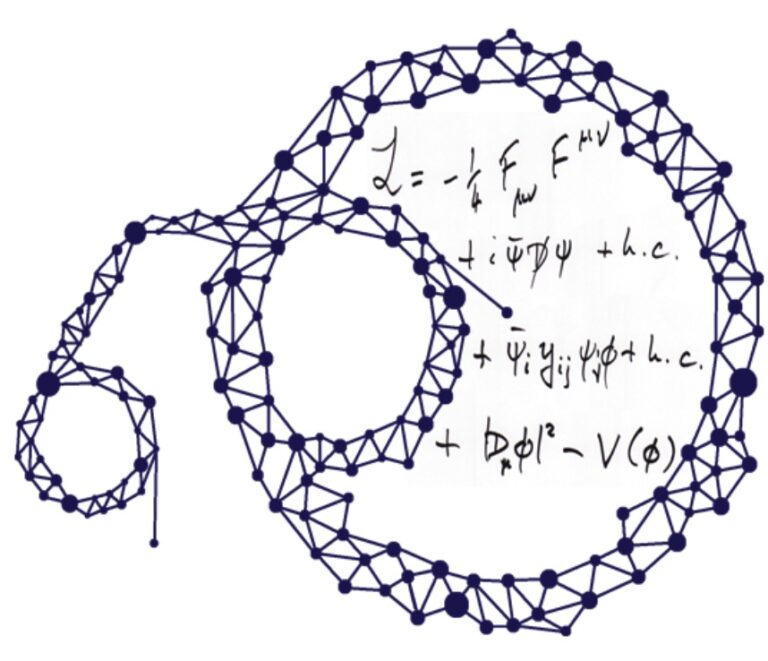
We created a new regular course Physics 361 – Machine Learning in Physics, which was taught for the first time in Spring 2024 by Münchmeyer and Shiu, and a second time in Spring 2025 by Moritz Münchmeyer. We expect that this course will be offered every spring semester.
This course summarizes the many ways in which Machine Learning is used in physics, such as classification, regression, simulations with generative models, likelihood-free inference and uncertainty quantification. We will update and improve the course at each iteration, to keep up with the rapid development in the field.
Lecture Slides (Spring 2025)
The Spring 2025 edition, taught by Moritz Münchmeyer, includes a deeper coverage of LLMs and Reasoning Models and more problem sets with real work applications (designed in large parts by TA Yurii Kvasiuk). Problem sets are available to instructors on request.
Introduction
- Lecture 1 – Introduction – Overview of Applications of Machine Learning to physics
Background: Probability theory and Information theory
Basics of Machine Learning and Basic Architectures
- Lecture 4 – Linear and polynomial Regression, Multilayer Perceptrons (MLP)
- Lecture 5 – Application to SUSY, Intro to pytorch
- Lecture 6 – Optimization, Shallow and Deep NN
- Lecture 7 – Decision Trees and Random Forrests
- Lecture 8 – Classic Unsupervised Methods
Working with images and fields – CNNs in physics
- Lecture 9 – Convolutional Neural Networks
- Lecture 10 – Field-to-Field Learning in Cosmology
Simulation-based inference & Uncertainty Quantification
- Lecture 11 – Learning PDFs
- Lecture 12 – SBI 1
- Lecture 13 – SBI 2
Advanced data structures: Graphs and Point Clouds
- Lecture 14 – Graph Neural Networks
Transformers, LLMs, Foundation Models, Reinforcement Learning, Reasoning
- Lecture 15 – Transformers
- Lecture 16 – Large Language Models
- Lecture 17 – Foundation Models for Science, LLMs for Math
- Lecture 18 – Reinforcement Learning
- Lecture 19 – Reinforcement Learning 2
- Lecture 20 – LLMs for Reasoning
Generative Models: Auto-Encoders, VAE, Diffusion Models, Score Matching, Flow Matching
- Lecture 21 – Auto-Encoders and VAE (guest lecture by Jacky Jip)
- Lecture 22 – Diffusion Models
- Lecture 23 – More on Generative Models
Other advanced topics
- Lecture 24 – PDE solving, Inverse problems, Anomaly detection
- Lecture 25 – Interpretability, Symbolic Regression, Emulators
- Lecture 26 – Final Project Presentations
- Lecture 27 – Special Lecture: Nobel Prize 2024 (guest lecture by Yurii Kvasiuk)
Lecture Slides (Spring 2024)
The Spring 2024 edition, taught by Moritz Münchmeyer and Gary Shiu was the first time this course was taught, and covers a wide range of AI in Physics methods and applications.
Introduction
- Lecture 1 – Introduction: Overview of Applications of Machine Learning to physics
Background: Probability theory and Information theory
Basics of Machine Learning
Basic Neural Network Architectures
Unsupervised methods
Guest lectures
- Lecture 13 – GNN: guest lecture by Yurii Kvasiuk on Graph Neural Networks
- Lecture 14 – Autoencoder: guest lecture by Jacky Yip on Autoencoders
Decision Trees, KNN, Random Forrests, Scikit-learn
- Lecture 15 – Decision Trees
- Lecture 16 – DT-kNN
- Lecture 17 – random forests
- Lecture 18 – redshift application
Transformers, LLMs
Reinforcement Learning
Simulation-based inference and Normalizing flows
Diffusion Models
Solving Inverse Problems and PDEs with NN
Final Lecture
- Lecture 28 – Presentation of Final Projects